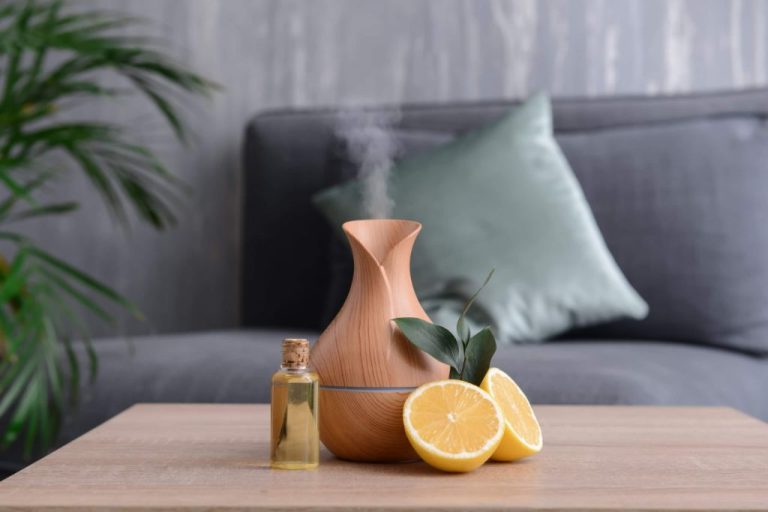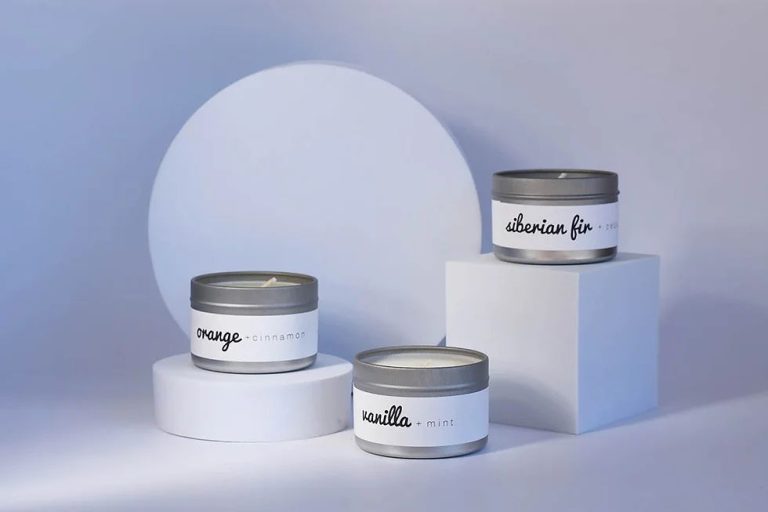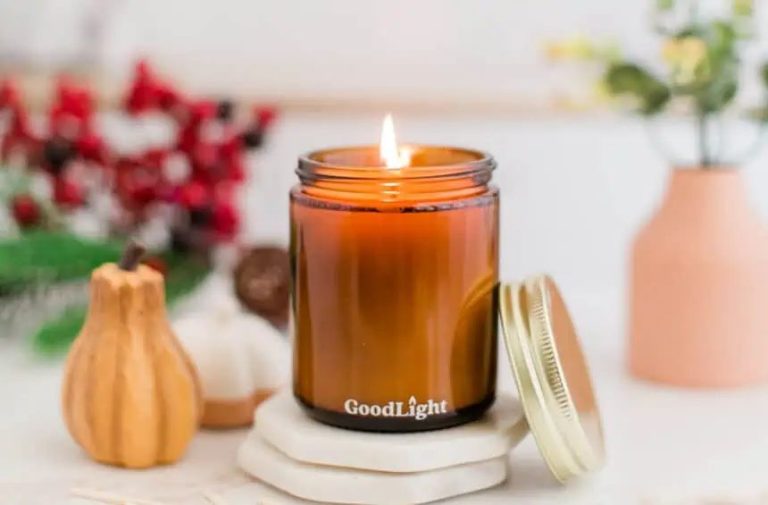Is Ceramic Better Than Glass For Candles?
When it comes to candles, the vessel or container that holds the wax and wick can have a significant impact on the candle’s performance and overall experience. Two of the most common materials used for candle containers are ceramic and glass. Both have their own advantages and drawbacks when used for candles.
Ceramic and glass containers differ in their heat resistance, durability, aesthetics, fragrance throw, safety, cost, availability, and ease of cleaning. This article compares ceramic and glass candle holders in each of these categories to help determine which material is better suited for use as a candle vessel.
Heat Resistance
When it comes to heat resistance, ceramic has a clear advantage over glass. Ceramic can withstand much higher temperatures before cracking or melting. The exact maximum temperature depends on the specific type and quality of the ceramic, but ceramic candle holders and jars are generally able to withstand temperatures between 1000°F to 3000°F.
Glass, on the other hand, begins to soften at temperatures between 1000°F to 1600°F. This means that glass containers can crack or warp under the high heat of a candle flame. The key difference is that ceramic maintains its strength and rigid structure even when extremely hot, while glass becomes weaker and more malleable as temperature rises.
This high heat resistance makes ceramic the better choice for any candle holder. Ceramic won’t get dangerously hot to the touch like glass can, and is far less likely to crack from the heat. You can comfortably leave a burning candle in a ceramic holder without worry. This gives more flexibility in candle usage and allows for larger, hotter burning candles.
Durability
When it comes to durability, ceramic candle holders have a clear advantage over glass. Ceramic is less prone to breaking, chipping, or cracking compared to glass. While glass can shatter if dropped or knocked over, ceramic is far more resistant to impact and everyday wear and tear.
Ceramic’s dense molecular structure makes it much tougher and more durable than glass. Glass contains micro-fractures and flaws throughout its structure, whereas ceramic has a uniform composition that is highly resistant to fracturing. Even thin ceramic holders maintain their structural integrity better than thick glass holders.
The extra durability of ceramic provides important safety and longevity benefits for candles. Glass holders run a higher risk of breaking when a candle is actively burning, creating hazardous shards around an open flame. Meanwhile, ceramic holders can better withstand accidental bumps and knocks that occur in daily use. With care, ceramic holders can last for many years without showing signs of damage. Their durability ensures a long usable lifespan not matched by delicate glass holders.
Aesthetics
When it comes to aesthetics and visual appeal, ceramic candle holders have the edge over glass. Ceramic comes in a huge variety of colors, shapes, designs, and artistic styles. From simple solid colors to intricate painted patterns, the options for ceramic are virtually endless. Glass, on the other hand, tends to come in basic transparent or colored varieties without much decoration. The malleable nature of clay allows ceramic artisans to craft candle holders in any shape imaginable – fluted pillars, geometric cubes, swirling vases, sculpted figurines, and more. Glass is restricted to typical container forms like cylinders, vases, and bowls. For candle enthusiasts who want to match their decor, reflect their personal style, or add an artistic flair to a room, ceramic offers a much wider selection of decorative looks and custom designs compared to plain glass.
Fragrance
One key advantage of ceramic over glass for candles is that ceramic tends to retain fragrance much better. The porous nature of ceramic allows it to absorb and hold on to scents from oils and fragrances. As the candle burns, the ceramic releases the aroma more slowly and evenly. With glass, scent can dissipate more rapidly as the candle burns. The slick nonporous surface of glass does not grip scents in the same way. So you’ll get a stronger, longer-lasting fragrance from a ceramic vessel versus a glass one. For lovers of scented candles who want their home infused with beautiful aromas, ceramic is the clear winner over glass.
Safety
When it comes to safety, ceramic candle holders have a clear advantage over glass. Glass can shatter if heated too quickly or dropped, sending shards flying. Ceramic, on the other hand, does not shatter so easily. At most, a ceramic holder might chip if dropped, but it is unlikely to break apart into sharp pieces.
The risk of burns is also lower with ceramic candle holders. Glass conducts heat more quickly than ceramic. So a glass holder heated by a candle flame can burn fingers faster than a ceramic holder. Ceramic insulates better and provides more protection from getting burned.
For homes with kids or pets, ceramic candle holders reduce the chance of cuts from broken glass. Fragile glass also poses more of a hazard for the elderly who may knock holders over by accident. The safer material choice is clearly ceramic when safety is the priority.
Cost
When it comes to cost, ceramic candle containers tend to be more expensive than glass. There are a few reasons for this:
Ceramic is more difficult to manufacture than glass, requiring specialized equipment and skills. The raw materials are also costlier. These extra expenses get passed along to the consumer.
Ceramic candle holders are often handmade or produced in smaller batches rather than mass-produced like glass. Again, this artisanal production process comes at a higher price.
Ceramic can be customized in terms of shape, color, and decorative touches in ways that glass usually can’t. This uniqueness allows ceramic makers to charge a premium.
High-end ceramic candle vessels are sometimes designed by famous artists and home decor experts, commanding luxury pricing.
While basic glass containers remain inexpensive, ceramic’s perceived value as a natural material makes it pricier across the board. The look and feel of ceramic makes it a choice for gift-giving and special occasions.
For budget-conscious candle enthusiasts, glass remains the more wallet-friendly option. But those who appreciate ceramic’s beauty and versatility may find the extra cost worthwhile.
Availability
When it comes to availability of glass vs. ceramic candle containers, glass has a clear advantage. Glass containers come in a much wider variety of styles, shapes, sizes, and designs compared to ceramic. This is because glass is an incredibly versatile material that can be molded and shaped in countless ways. Major candle manufacturers offer dozens, if not hundreds, of different glass jar and container options to choose from.
Ceramic candle containers, on the other hand, have far less selection. The material is heavier and more difficult to work with, limiting the shapes and styles that can be achieved. Most ceramic containers are basic jars or bowls without elaborate designs. The number of sizes and color choices is also more restricted. This lack of variety in ceramic candle vessels gives glass the upper hand when availability and options are important.
Cleaning
When it comes to cleaning, glass candle holders tend to be easier to maintain than ceramic ones. Glass can be washed with warm soapy water or glass cleaner. The smooth surface means spilled wax can be wiped away without too much effort. Ceramic, on the other hand, requires a bit more care when cleaning. The porous nature of ceramic means it can absorb wax and be more difficult to remove. Using very hot water or freezing the candle holder can help release excess built up wax. Some gentle scrubbing may be required. Ceramic also can’t be washed in the dishwasher like glass can. The high heat and harsh detergents can damage the finish. Special ceramic cleaners are recommended for ceramic candle holders instead of typical household cleaners. With proper care, both glass and ceramic candle holders can remain beautiful, but ceramic does require some extra effort to keep clean.
Conclusion
In summary, both ceramic and glass have their merits when used for candle containers. Ceramic excels in heat resistance, durability, aesthetics, and fragrance throw. The natural porous material retains scent and allows more fragrance to fill the surrounding area. With glazes and patterns, ceramics offer endless visual customization for unique candle designs. Glass, on the other hand, is easier to clean and more readily available at lower costs. It presents fewer potential safety issues if broken. Ultimately, ceramic is often the better choice for candles, especially for homemade, artistic, or luxury candles. The exceptional heat resistance, custom styles, and unbeatable fragrance diffusion provide an enhanced candle experience.



